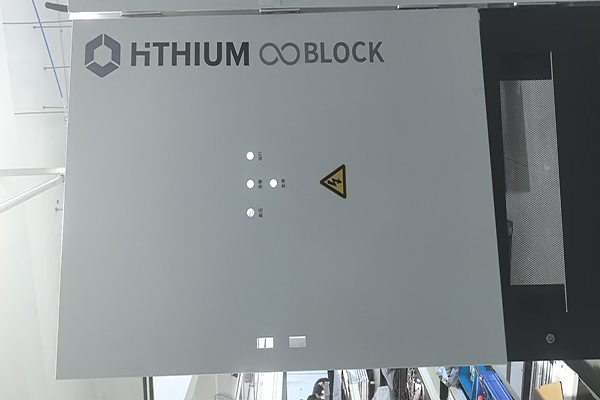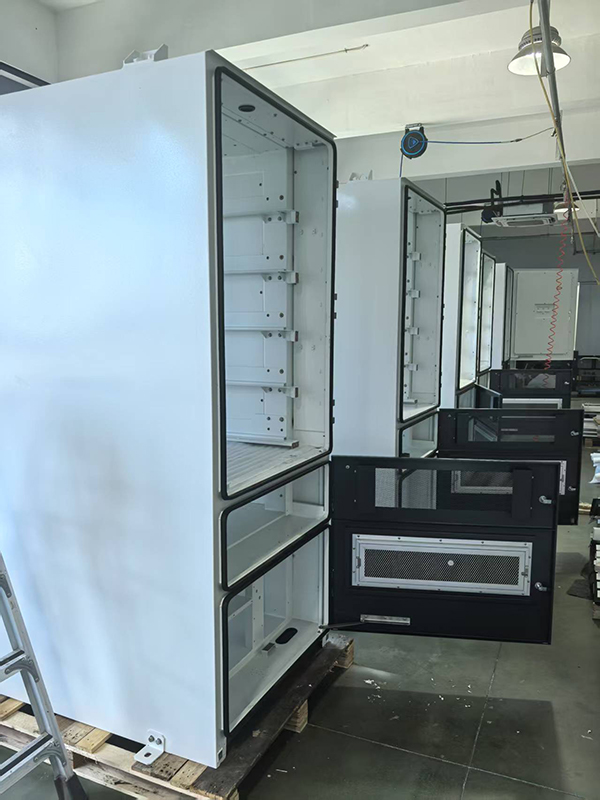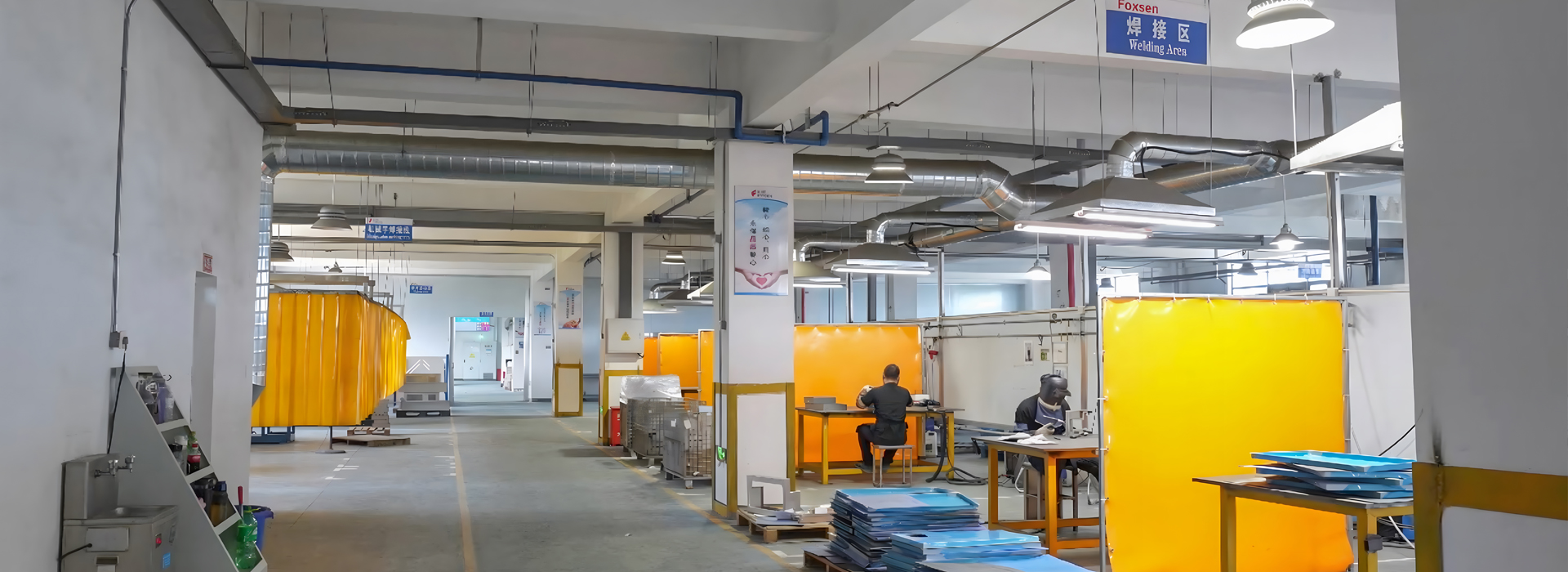
Sheet metal telecom cabinets are important for protecting telecom equipment. Their strong build keeps them reliable in tough environments. These cabinets, usually made of galvanized steel, are very sturdy. Each side can handle over 980N of pressure. The outer edges can take more than 200N when the doors are open. With an IP55 rating, they block dust and water, even in bad weather.
Knowing their features helps make better choices for setups. For example, a cabinet with 80W/K cooling and a temperature range of -40°C to +55°C works well. These qualities make sheet metal telecom cabinets essential for good telecom systems.
Key Takeaways
Metal cabinets keep telecom equipment safe from damage and weather. Pick cabinets made of strong steel or aluminum for long use.
Choose the right cabinet for your needs: indoor ones for safe places, outdoor ones for rough weather, and wall-mounted ones to save space.
Get cabinets with good cooling and airflow. This stops overheating and helps your equipment last longer.
Make sure the cabinets have strong locks and seals. These keep your equipment safe from theft and bad weather.
Think about using custom cabinets for special projects. They can be made to fit your needs and save time and money.
Types of Sheet Metal Telecom Cabinets
Indoor Cabinets
Indoor cabinets are made for telecom equipment in safe places like offices or server rooms. They focus on keeping things tidy and easy to reach. These cabinets help keep network parts secure and simple to manage. I suggest indoor cabinets for areas with steady temperature and humidity.
A big plus of indoor cabinets is their light build. Makers use materials like aluminum or plastic to make them lighter but still strong. This makes moving and setting them up easier. They also come with cable organizers, adjustable shelves, and vents to work better.
New tech in sheet metal cutting has made indoor cabinets even better. Machines now make parts more accurately, so these cabinets fit modern telecom needs perfectly.
Outdoor Cabinets
Outdoor cabinets are made to handle tough weather. Unlike indoor ones, they face heat, cold, rain, snow, and even vandalism. To last long, they are built with strong materials like stainless steel or aluminum. These materials resist weather and wear well.
I’ve seen outdoor cabinets with cooling systems and strong locks. These features keep telecom gear safe and working, even in bad conditions. For instance, an IP55-rated cabinet keeps out dust and water, making it great for outdoor setups.
The use of smart tech has changed outdoor cabinet designs. Now, IoT devices and smart tools can check cabinet conditions in real time. This makes them more reliable and useful for modern telecom systems.
Wall-Mounted Cabinets
Wall-mounted cabinets save space in small telecom setups. They are smaller than floor-standing ones, so they fit well in tight spots like small offices.
These cabinets are very flexible. You can hang them at different heights for easy access while keeping the floor clear. I recommend them for projects where saving space matters most.
Even though they are small, wall-mounted cabinets still work well. They have lockable doors, vents, and cable organizers to keep telecom gear safe and neat. New 3D printing methods now allow for cooler designs that look good and work better.
Tip: When picking a wall-mounted cabinet, think about your equipment's weight and the wall's strength. This helps ensure it stays safely in place.
Floor-Standing Cabinets
Floor-standing cabinets are key for big telecom setups. They hold heavy equipment and offer lots of space. These cabinets work well in data centers and server rooms. Stability and scalability make them great for high-capacity setups.
Their strong build is a major benefit. Makers use tough sheet metal for durability. These cabinets can carry heavy loads like servers and routers. This makes them perfect for holding many telecom devices.
Tip: Check how much weight the cabinet can hold before use. Overloading can weaken it and harm your equipment.
Another useful feature is their modular design. Adjustable shelves and cable organizers help keep things neat. Removable panels make maintenance easier. Some models have cooling systems to stop overheating. This keeps equipment running smoothly.
Outdoor versions have weatherproof designs. They include strong doors, seals, and coatings to resist rust. These features protect telecom gear from bad weather and damage.
Customizable Cabinets
Customizable cabinets are great for special telecom needs. You can change their size, design, and features. These cabinets work well when regular ones don’t fit the project.
You can pick the metal type, compartments, and even the color. Some have advanced options like built-in power units and better security. Cooling systems can also be added. This makes them match both technical and style needs.
Note: Talk to the maker about your needs when customizing. Clear plans help avoid mistakes and delays.
Customizable cabinets save money over time. They cost more upfront but need fewer changes later. This makes them a smart choice for long-term projects.
These cabinets are very useful for precise telecom setups. They work for small or large networks. Their flexibility helps achieve the best results.
Features of Sheet Metal Telecom Cabinets

Material Durability
The strength of sheet metal telecom cabinets is very important. I’ve seen cabinets made from galvanized steel and aluminum, and they are very strong. These metals don’t rust easily, so they last a long time. For instance, galvanized steel has a zinc layer that stops rust, making it great for outdoor use.
Makers test these cabinets to hold heavy equipment and resist damage. This ensures they won’t bend or break under pressure. Always check the material details before buying. A cabinet with high strength will last longer and work better.
Tip: Pick cabinets with powder-coated finishes. This coating adds protection and makes them look nice.
Cooling and Ventilation Systems
Good cooling and airflow are key for telecom equipment. Too much heat can harm parts, so I prefer cabinets with cooling features. Some have small holes or vents for natural airflow. Others use fans or air conditioners for better cooling in busy setups.
I’ve seen cabinets with systems that check and control the temperature inside. These smart features stop overheating and help equipment last longer. Good airflow also keeps dust away, which can block parts and cause problems.
Note: Think about how much heat your equipment makes. This helps you pick a cabinet with the right cooling system.
Security Features
Keeping telecom equipment safe is very important. Many cabinets have strong locks to stop people from breaking in. I’ve used cabinets with locks that spread force evenly, making them harder to open. Some even have electronic locks with keypads or fingerprint scanners for extra safety.
Another useful feature is hinges that can’t be removed. These stop people from taking off the doors to get inside. For outdoor use, I suggest cabinets with strong doors and seals to keep out bad weather. These features protect against theft and damage from the environment.
Tip: Choose a cabinet with an IP rating that fits your needs. Higher ratings mean better protection from dust, water, and break-ins.
Electromagnetic Shielding
Electromagnetic shielding is very important in telecom cabinets. It stops EMI from messing up sensitive equipment. I’ve used cabinets that block EMI well, and they keep signals clear.
This shielding uses conductive metals like galvanized steel or aluminum. These metals create a barrier to block outside waves. They also stop signals inside from escaping. For instance, a cabinet with a Faraday cage design cuts interference a lot.
Tip: Pick cabinets with EMI shielding for high-frequency setups. This is also helpful in areas with strong electromagnetic activity.
Some cabinets have seals at doors and joints for better shielding. These small features improve how well the cabinet works. I’ve seen bad shielding cause data loss and weak signals. Switching to a cabinet with good EMI protection fixed these problems fast.
Shielding isn’t just about safety. It also meets rules like FCC standards, which limit EMI emissions. A cabinet with strong shielding helps follow these rules and avoids fines.
Compliance with Industry Standards
Following industry standards is a must for telecom cabinets. Standards ensure safety, reliability, and system compatibility. I suggest looking for certifications like ISO 9001 for quality or UL 508A for electrical safety.
Many cabinets also meet IP ratings for dust and water protection. For outdoor use, an IP55 rating or higher is needed. This keeps the cabinet working well in tough weather.
Note: Choose cabinets that meet TIA/EIA-569 standards. These standards help with cable management and spacing.
Standards make project approvals easier and lower risks. They also ensure the cabinet works well in different conditions. I’ve seen projects delayed because of non-compliant cabinets. Picking certified cabinets early avoids these problems.
By following standards, you protect your investment and make installation smoother.
Applications of Sheet Metal Telecom Cabinets
Network Equipment Protection
Sheet metal Telecom Cabinets keep network equipment safe and secure. They protect devices like routers, switches, and servers from damage. Strong materials like aluminum or cold-rolled steel make them durable.
Keeping equipment cool is very important for good performance. Cabinets with cooling systems stop overheating and prevent failures. I suggest using cabinets with vents or built-in cooling for high-power setups. These cabinets also have strong locks to stop unauthorized access and keep systems running smoothly.
Tip: Pick cabinets that can hold your equipment’s weight. This avoids damage and keeps everything safe.
Organization and Accessibility
Organized telecom setups work better and save time. Sheet metal Telecom Cabinets help keep network parts neat and easy to reach. Adjustable shelves and cable organizers make arranging equipment simple.
Good cable management prevents messy wires and accidental unplugging. Cabinets with labels and removable panels make fixing problems faster. In data centers, these features save time during repairs or upgrades.
Note: Check if the cabinet lets you reach rear panels easily. Also, make sure it works with rack-mounted devices for smoother use.
Enhancing System Efficiency
Efficiency is key for telecom systems. Sheet metal Telecom Cabinets improve performance with smart features. Built-in power systems reduce wasted energy and make equipment more reliable.
These cabinets fit rack-mounted devices well, saving space and improving airflow. Better cooling helps equipment last longer. In IT setups, they safely store important parts for smooth operations.
Tip: Choose cabinets that meet standards like ISO 9001 or UL 508A. This ensures they work well with your system and stay reliable.
Specialized Telecom Projects
Special telecom projects often need special solutions, not standard ones. I’ve seen cases where regular cabinets didn’t work well. In such times, sheet metal Telecom Cabinets offered the strength and flexibility required for tricky setups.
One example is remote communication towers. These places need cabinets that handle bad weather and protect delicate equipment. I’ve noticed cabinets made with strong steel and cooling systems to keep them running. These features are vital for staying connected in faraway areas.
Another use is mobile telecom units. These units need cabinets that are light but tough for easy moving. I’ve used modular cabinets that are simple to put together or take apart. This makes them perfect for temporary setups like disaster recovery or big events.
In some projects, electromagnetic interference (EMI) causes big problems. For example, in cities with lots of electromagnetic activity, cabinets with better EMI shielding are a must. I’ve seen how these cabinets stop signal issues and keep communication steady.
Tip: For special projects, talk to makers about custom cabinets. This saves time and ensures everything works well.
Specialized projects also gain from cabinets with built-in power systems. These systems cut energy use and boost efficiency. I’ve worked on setups where built-in power units removed the need for extra parts, making the design simpler.
Picking the right sheet metal telecom cabinet is very important. It keeps equipment safe and helps systems work well. Always think about your needs before choosing one.
Check Features: Find cabinets with strong builds, cooling, and good locks.
Think About Use: Decide if it’s for indoor, outdoor, or special setups.
Plan Ahead: Choose designs that can grow with future upgrades.
Pro Tip: Talk to makers for custom options. Custom cabinets are great for unique needs.
By focusing on these points, you’ll make a smart choice. This ensures your setup works well for a long time.
FAQ
What material is best for telecom cabinets?
Galvanized steel is strong and resists rust well. It works indoors and outdoors. Aluminum is good too because it’s lightweight. Both protect telecom equipment effectively.
How do I pick the right cabinet size?
Measure your equipment and leave room for growth. Choose a cabinet with adjustable shelves and space for cables. This avoids crowding and keeps things organized.
Can these cabinets handle bad weather?
Yes, outdoor cabinets with IP55 or higher ratings are tough. They have seals and cooling systems to handle heat, cold, and rain.
Are custom cabinets a good idea?
Custom cabinets cost more at first but save money later. They fit your needs perfectly and avoid future changes. Talk to makers about your project for the best fit.
How do I care for telecom cabinets?
Clean the outside and check for rust or damage often. Look at locks, cooling, and cable setups. Do maintenance every six months to keep them working well.





